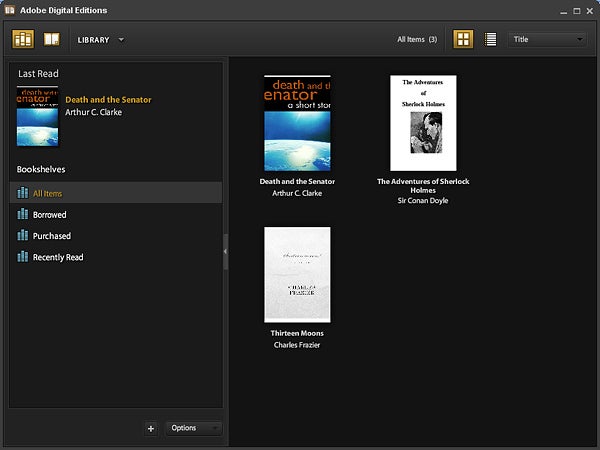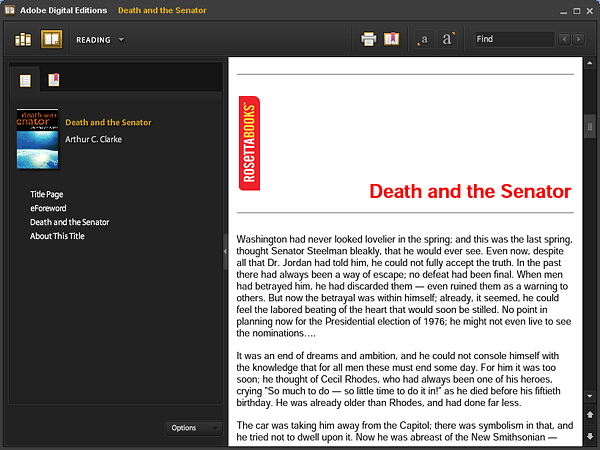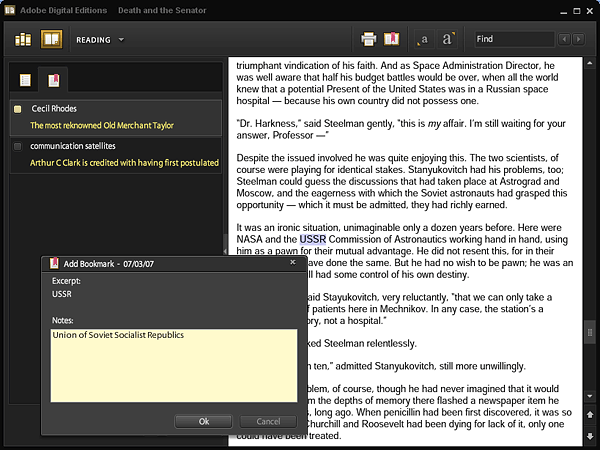Adobe Digital Editions 1.0 Review
Adobe Digital Editions 1.0
There's a fancy new eBook reader in town, compatible with the .epub file extension. Simon takes a closer look...

Verdict
The eBook is a technology that’s been coming ‘Real Soon Now’ for some years. You’ve been able to read a whole book on your PC, notebook or PDA for a while, but so far comparatively few (484,933 sales in Q2, 2005*) regularly do so. Adobe’s introduction of Digital Editions aims to change that. In the same way that it’s made the PDF file ubiquitous for disseminating documentation and sales materials, the company clearly hopes to do the same for the .epub electronic book.
.epub encompasses two formats, one for the structure of an eBook, known as the Open Publication Structure (OPS) and the other an Open Container Format (OCF), both developed by the International Digital Publishing Forum (IDPF). OPS uses the XML format as its basis, and works with elements of XHTML, too, to provide a format that most eBook publishers should be able to work with.
The idea behind OCF is that you bundle the text of an eBook, any digital signature, ownership rights and encryption into a zip-compressed format, which can then be read over a wide platform of readers. Looking under the surface, the key words in OCF seem to be ‘signature’ and ‘rights’, as it looks as though we’ll see more Digital Rights Management (DRM) in eBooks, as we have in music and video distribution.
Adobe Digital Editions is the first big-name eBook reader to adopt the epub format though as you would expect it can also read PDF files. It’s a small, freeware applet, like Adobe Reader, but considerably simpler. You can download it from here in a couple of minutes.
We’re seeing a good few examples of daft design around at the moment, the prime example being the London Olympics logo, and Adobe isn’t in the clear either. Digital Editions is wonderfully realised in black on black. Slight exaggeration, as the text is in white and orange, but the window furniture is in very dark grey on a black background, making it hard to see and use.
The Digital Editions reader is a single black panel, which can display two views: Library and Reading. Library view shows the eBooks you have installed on your computer, by thumbnailing their front covers, if these are provided in the eBook files. To the left of these is a stylised tree display of books you have ‘borrowed’, purchased or read recently and a thumbnail of the last eBook you loaded. Clicking on any of the book thumbnails opens the corresponding eBook.
”*Source: IDPF”
Borrowing eBooks is a rather bizarre concept where, like its physical counterpart, you’re obliged to ‘return’ the books at the end of a loan period so they can be distributed to other readers. No real benefit to the library user, only to the publisher of the text who can control the number of electronic copies in circulation.
Reading view shows the text of the eBook on the right, with either a contents list or bookmarks on the left. Bookmarks can be those provided by the publisher or those you add. This you do by highlighting the target text and clicking on the bookmark icon above the eBook page. Also up there are icons for print – assuming you have the necessary permissions – changing font size and a Find function to search for specific text.
A single menu titled either Library or Reading, depending on viewing mode, offers text versions of the tool icons and access to an info panel, which gives details of the publisher and where the eBook is filed.
Down the right-hand side of the reading pane is a slide bar to move you through the text, though at present clicking on either side (top and bottom) of the slider doesn’t take you up and down by a page, as is normal within Windows. This is one of a number of known problems with version 1.0 of Digital Editions and will, we have to hope, be rectified in version 1.1.
Interestingly, when you right-click on the main Digital Editions pane, the Settings you’re offered are for Adobe Flash Player, suggesting there’s a strong connection between the two products. The settings include selecting your WebCam and microphone, both of which seem a little incongruous for a text reader. Perhaps Adobe has planned some interesting expansions of Digital Editions.
”’Verdict”’
OK it’s free, but the minimalist design doesn’t help with its primary function, which is to read eBooks. You can see where Adobe is going with Digital Editions, though, even from this fairly basic first version. If it can roll out versions for Mac OS X, Linux and, especially, a variety of portable devices (all of these are promised) it has the marketing muscle to squeeze out the loyal band of eBook readers that already support the various electronic book formats. Could epub be the new PDF?
Trusted Score
Score in detail
-
Features 7
-
Usability 7

